Last season, Norwich City finished their first season under Daniel Farke at 14th position, a comfortable mid-table place. James Maddison was the standout player for the side as he scored fourteen goals and made eight assists in the Championship. It doesn’t come as a surprise when Premier League clubs started lurking around for his signature. Eventually, he secured a move to Leicester City and continued to shine under the management of Claude Puel and Brendan Rodgers.
The same period also saw Cultural Leonesa’s return to the Segunda División after 43 years. Their search for players who are capable of playing in the division led them to Emi Buendía, the Getafé prospect. The Argentinian immediately became a key player for them and he ended the loan spell with seven goals and eleven assists. Although he couldn’t help Leonesa survive relegation, his performance caught the eyes of many Championship clubs, including Norwich.
Daniel Farke wanted him to fill in Maddison’s position as a playmaker and he did just that. 12 assists and eight goals in his first season in the Championship has proved his quality for the Norfolk-based side. This tactical analysis will look closely at how Buendía became the orchestrator for Norwich in their 2018/19 Championship-winning season.
Overview
Emiliano Buendía, usually known as Emi, started his career at his native club, Cadetes de San Martín. In 2009, Real Madrid captured his signature following a recommendation from Juan Esnáider, a former player of both clubs. But his time with the Los Blancos soon ended as he found himself surplus to requirements. Getafé quickly snapped him up for their academy a year later and he stayed with the club until last summer. Stuart Webber identified him as a replacement for not only Maddison but also for the club legend, Wes Hoolahan.
Looking through his stats this season, it’s fair to say that he has accomplished what was expected from him. He is the joint-second most assists player with 12 assists, only behind Brentford’s Saïd Benrahma. The Argentinian attacking midfielder also recorded 18 key passes, second highest among the Norwich squad. On an average of every 125 minutes, he would involve in one Norwich’s goal. Adding to that, he had scored eight goals which included a brace against Hull. It’s not the most impressive number but that contributed to a very strong season.
A minor setback for him is his discipline. This season, he picked up seven yellow cards in every competition and one red card from the Queens Park Rangers match. It shows that he is not easy to be bullied by defenders and he could be aggressive when needed. Keeping one’s head cool in situations is not simple, though. But if he could avoid the unnecessary fouls, he would be able to contribute to the team’s play even more.
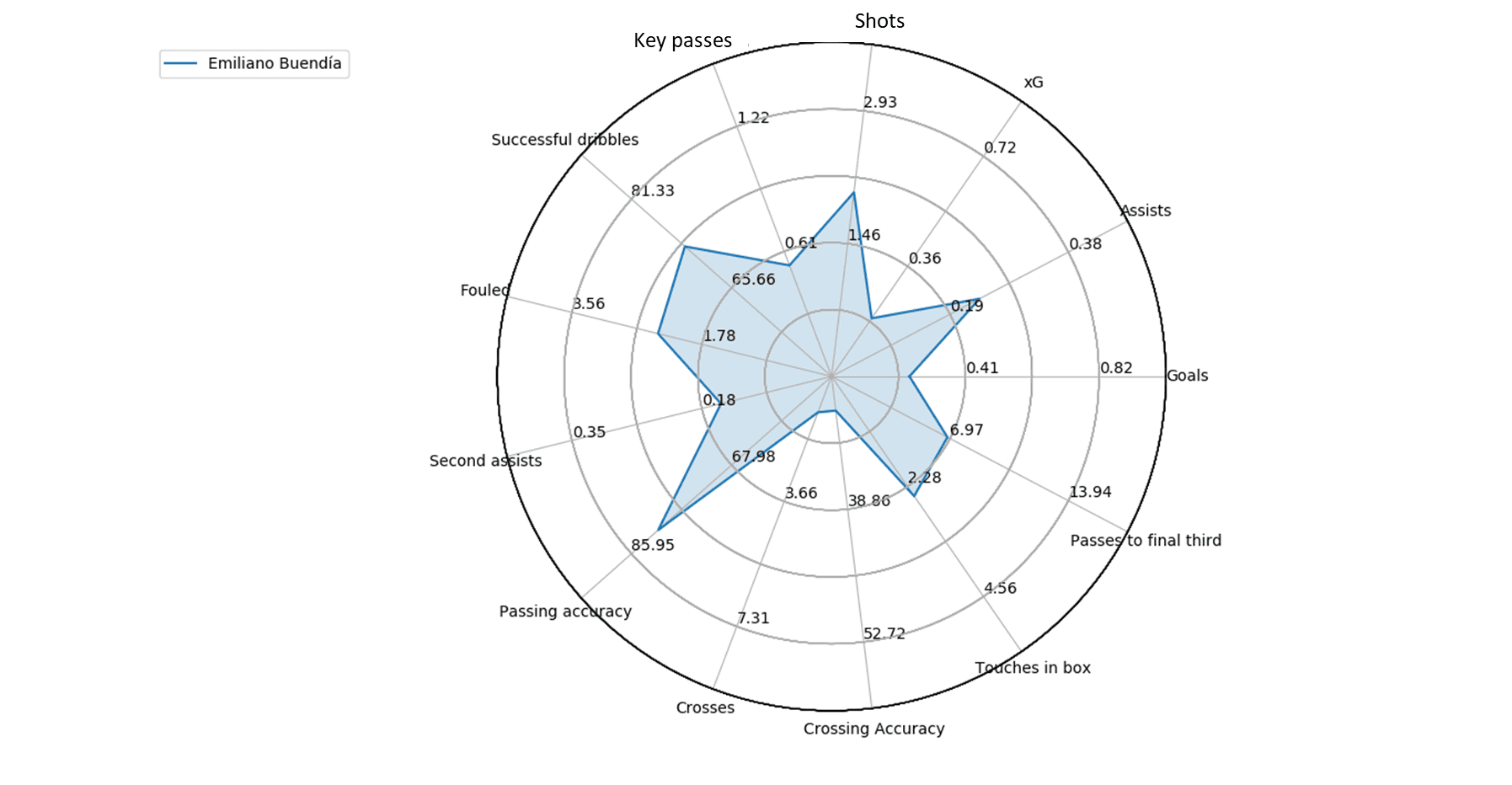
Intelligent movement and positional awareness
As a right attacking midfielder in Farke’s 4-2-3-1 system, Buendía tends to operate in the half-spaces. He often leaves the wide space for his partner, Max Aarons, to occupy whenever the right-back is overlapping. Both had formed a very strong connection between each other and it allows them to operate more efficiently.
On some occasions, the Argentinian midfielder even creates spaces for Aarons to overlap. The shot below demonstrates exactly what I’ve just mentioned. From his position, Buendía dropped deep and turned himself into a passing option for Christoph Zimmermann. At the same time, he dragged along the Queens Park Rangers’ central midfielder, creating a space behind him for Aarons. This kind of situation is something that happens very frequently in Norwich’s matches this season.
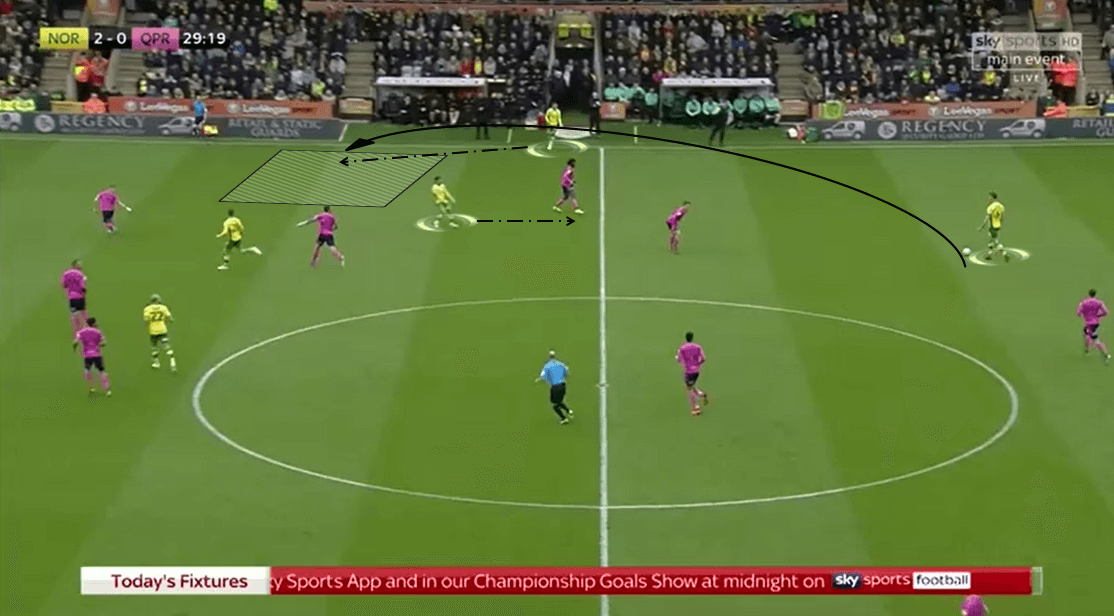
Versatility and flexibility are two of Buendía’s strength that have been showcased this season. Depending on how the situation develops, he can pick out space where he can receive the ball and dictate the play. At times, we might see him playing on the left-hand side, swapping position with Onel Hernández. He could also drift inside and play as the central attacking midfielder, pushing Marco Stiepermann to the right flank.
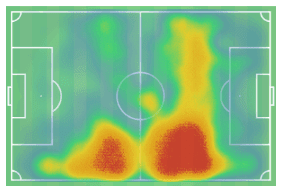
As mentioned in the subheading, one of Buendía’s strength is his positional awareness. He usually attacks the space behind the defensive line and drags the line with him. It would create a gap between the lines for his teammates to move in and provide support. This is an effective strategy to build up attacks against teams who play with a low-block. At the same time, it causes frustration for the defenders that marks him, and he is left with no choice but to foul him. On average, he managed to draw 2.57 fouls this season.
In the situation below, Buendía had a deeper starting spot compared to Aarons. But the Argentinian ran into the space behind Queens Park Rangers’ defenders first and waited there. Godfrey’s long ball to Aarons on the other side of the pitch forced the defensive line to retreat. From an offside state, Buendía now ready to receive the ball because the opposition’s players were inside the box. It was a bit of a lucky situation for him, but it still shows how intelligent Buendía is to form that attack.
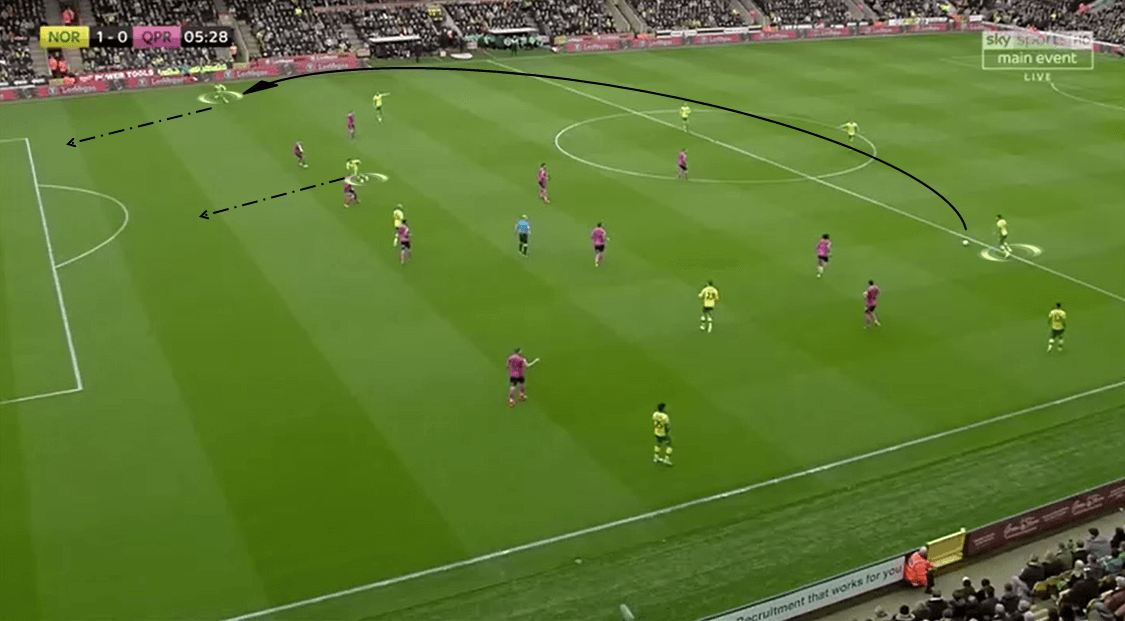
Another similar situation happened when Norwich welcomed Hull City this season. Playing with a high defensive line gave Buendía more advantage in space and time to pick up the ball. Again, from a deeper starting spot, the Argentinian midfielder broke into space between Todd Kane and Reece Burke. That run had created spaces for Pukki to move in and provided support for his teammate. An elegant flick towards the Finnish striker which was followed up by a run around Pukki secured Buendía the second goal of the night.
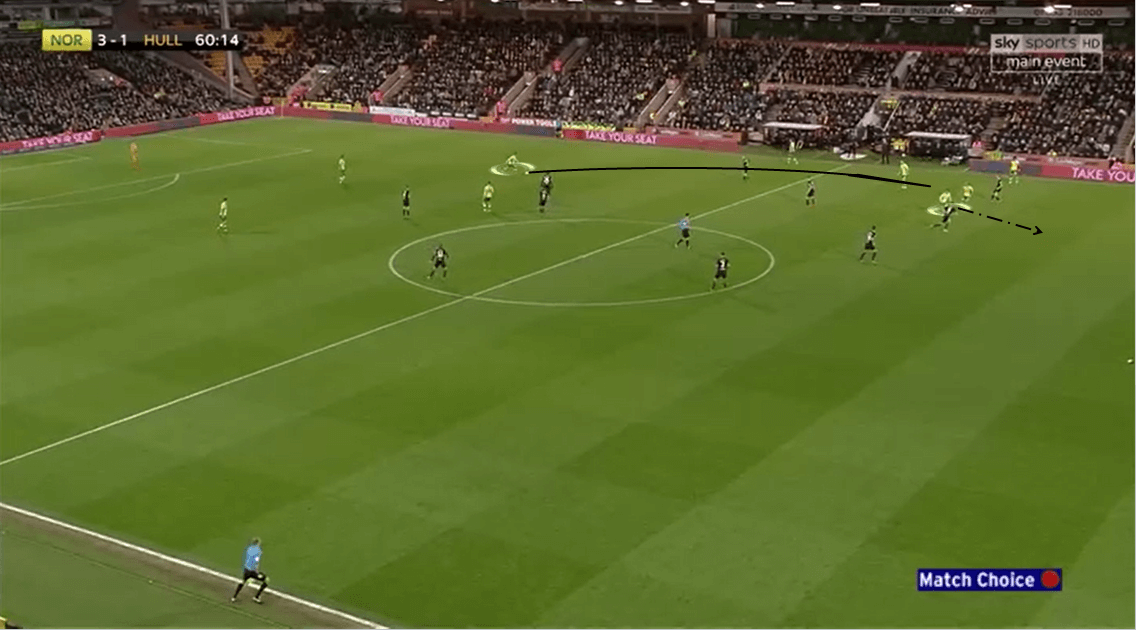
A complete passer
As the main playmaker of the team, Buendía plays a very important part in the team’s build-up. He usually drops deep to receive the ball from the defence, driving forward with pace and lay it to an attacker. By doing this, he has created more time and even space for his teammates.
When he carries the ball in a congested area, he usually forms a passing triangle with his teammates to circulate the ball out of that pressure zone. He tends to stay out wide, using Aarons’ overlap and either Stiepermann or Pukki’s movement to create that triangle.
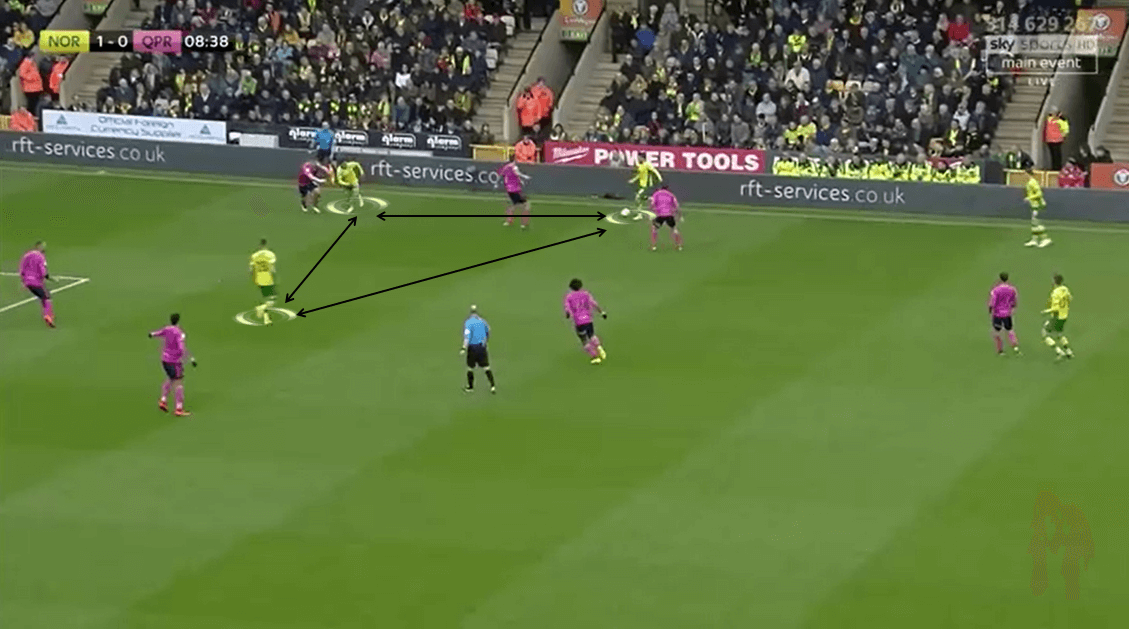
Registering an average of 48.18 passes per game and a success rate at 81.1%, it’s clear that Buendía had established himself as an important part of Norwich this season. As his stats show, he tends not to make long passes as it would reduce the quality and chance of success of the team’s attack. He only makes 2.24 long passes per game, that’s less than Maddison and Alex Pritchard’s records in their recent seasons with the club.

Working hard in the final third
Playing as a creative player on the field doesn’t mean you can’t have a sharp eye for goal, and that was the case for Buendía. As mentioned, he finished his season with eight goals in total. That number was a big improvement for Buendía, who was still struggling to adapt to English football at the start of the season.
During the period from August to October, he only manages to score one goal and made ten shots. But Farke didn’t put much pressure on him as he trusted the Argentinian to shake himself up and adapt to the game. And it paid off. In three matches after that period, he scored two goals and made one assist in a blossomed month for Norwich.
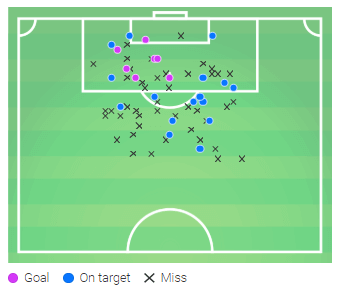
Buendía often cuts inside and waits for a lay off from Pukki or Stiepermann, or he could move into spaces being created and look for a rebound. As shown above, all of his goals this season were scored inside the box. He is also a threat outside the box, too. Although it could do with a bit of an improvement, still, he could cause troubles for the goalkeeper with his long shots.
A lot of Premier League teams tends to play with an aggressive low-block and it could disrupt Norwich’s attacking build-up. But with Buendía playing behind Pukki, the Argentinian would provide the key to break that defensive structure down with his intelligent movement and an eye for goal.
Defensively, he always tries and gets on the front foot whenever Norwich is pressing. He would stay close to a player but at the same time, keeping a moderate distance between him and that player. This allows him to time his run more precisely and start from a more active spot to recover the ball.
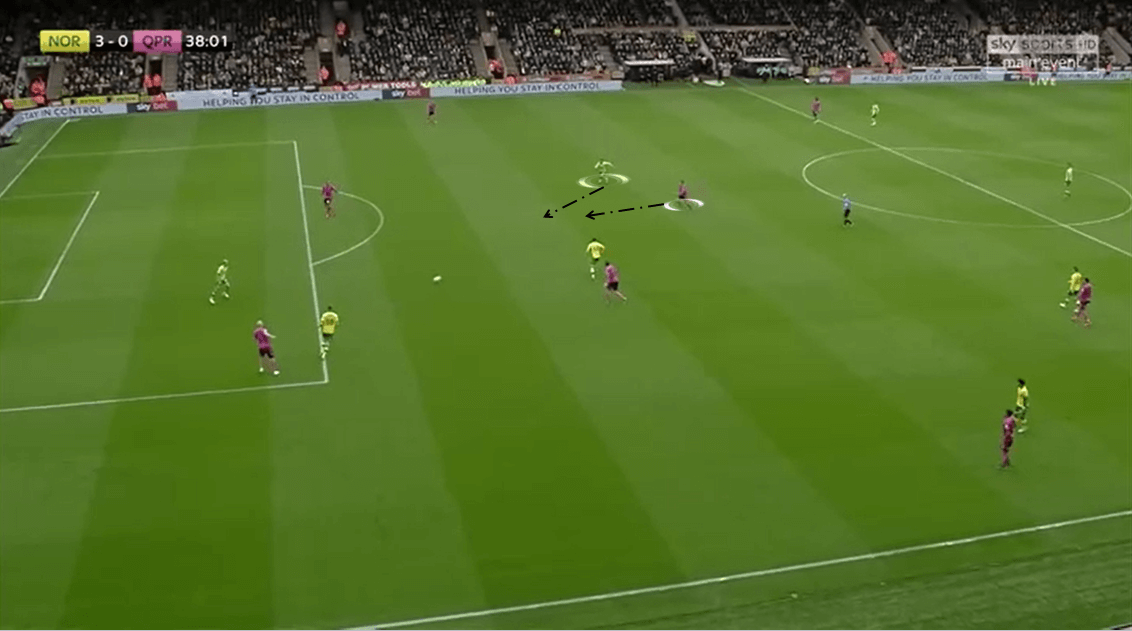
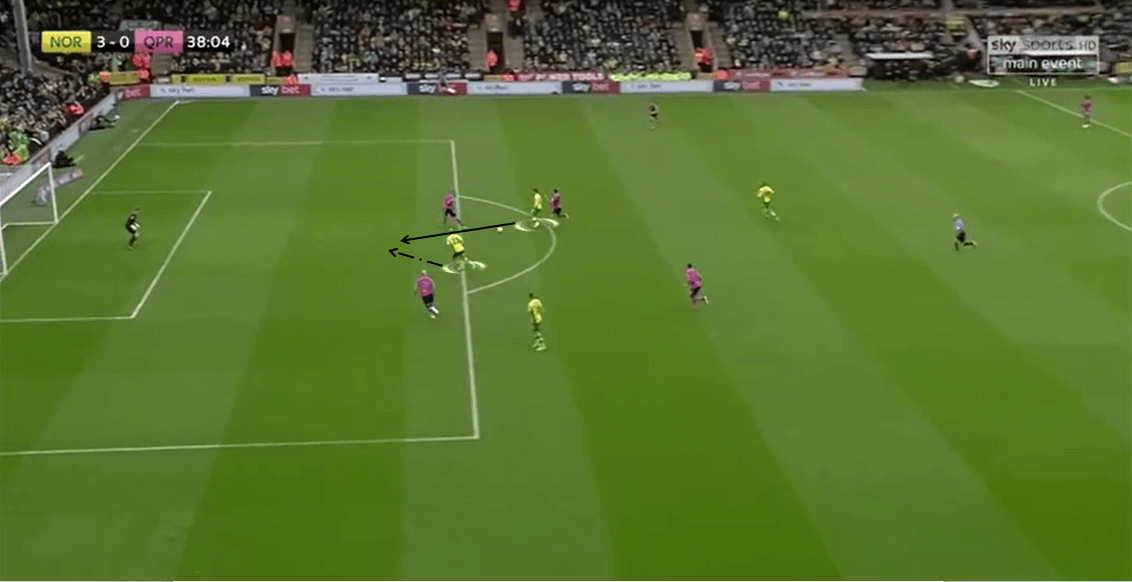
Conclusion
Last season, Norwich appointed Daniel Farke and Stuart Webber with a view of assembling a group of talented players to play in the EFL Championship. A year later, they managed to do something even bigger, winning the league and secured a Premier League spot next season. With a clear strategy and an attractive style of play, Norwich has finally returned to the big stage of English football.
In their impressive season, there was a name that stood out thanks to his performance. It was Emi Buendía, the Argentinian midfielder. When Alex Pritchard, James Maddison, and Wes Hoolahan left the club, they left a big space in the centre of the midfield. But Buendía had filled in that space perfectly with an intelligent football which he learned through his time in Spain.
If you love tactical analysis, then you’ll love the digital magazines from totalfootballanalysis.com – a guaranteed 100+ pages of pure tactical analysis covering topics from the Premier League, Serie A, La Liga, Bundesliga and many, many more. Buy your copy of the May issue for just ₤4.99 here, or even better sign up for a ₤50 annual membership (12 monthly issues plus the annual review) right here.

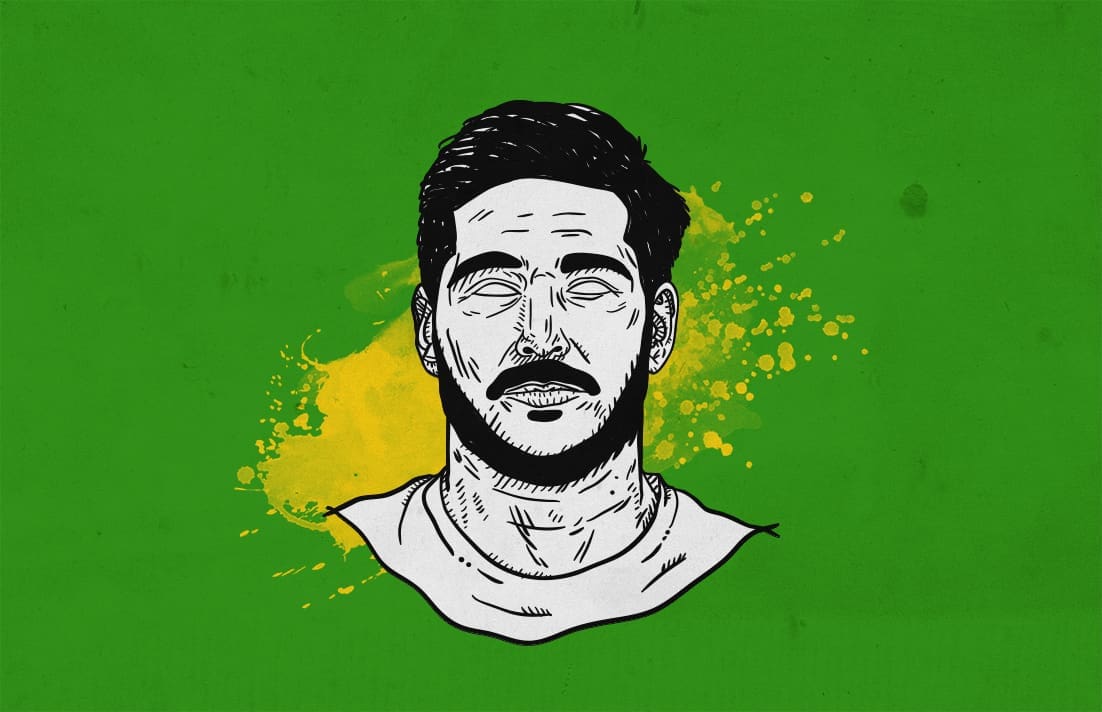



Comments